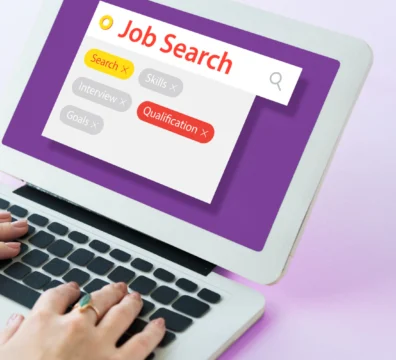What do you think is the most critical asset of a successful business? It is the employees whose efforts can help your business grow and meet success.
But just having the necessary educational qualifications isn’t enough to survive in the present competitive environment. For example, earlier, a lot of financial work was done manually, but now, many software and tools have come into place. Thus, your existing staff need to be trained to use these tools.
Therefore, developing an employee training policy in HRM is becoming a must-have option in companies. This ensures you work with existing talents by updating them with new skills and market trends. In today’s guide, we will share the importance of training policy in HRM and assist you in creating one for your company.
What is the Employee Training Policy in HRM?
According to research, nearly 94% of employees say a training policy in HRM would convince them to stay in the company longer. This policy sets out guidelines and procedures that you take to train your employees. It aims to promote the growth of employees, empower teams, and help your company achieve success.
It consists of different parts, including purpose, scope, roles and responsibilities, individual and corporate programs, and more.
Let us take Etsy as an employee training policy example for your understanding. It is a successful brand that has gained popularity because of its employee training and development policy in HRM.
They offer combined methodologies for employee training, including adult learning theory, organisational psychology, and sociology. Etsy allows the workers to opt for traditional learning opportunities, coaching and online resources.
The Importance of Employee Training Policy in HRM
Does investing in a training program sound like a luxury for your company? Training procedure in HRM is not only beneficial for employees but also for the company. The principal goal of staff training is to ensure they are suitable for your current business needs, hit targets efficiently, and promote a positive mindset within the organisation.
You can attract and engage top talents whenever you create an employee training policy for your staff. You can enhance their performance and productivity through proper training, leading to achieving your organisational objectives.
According to research, companies that invest in comprehensive training programs have higher incomes per employee level than others. These companies will have better market reputations, more sales, and higher profit margins.
You can design employee training programs depending on your organisational goals, objectives and audiences. Some common models are classroom-based training, interactive training, simulators, role-playing, case studies, etc.
What are the Key Components of an Employee Training Policy in HRM?
Continuous employee training and development can help your company survive market competition. It’s not just us, but 92% of employees think workplace training and development improve their job engagement, leading to better performance. The entire policy is subdivided into multiple parts, where each segment describes something about your training programs.
We have listed below some of the key components of an employee training policy in HRM.
Purpose and Scope
Firstly, you must mention the purpose and scope of your training policy. It defines your objectives and benefits of training, who the target audience and stakeholders are, legal and ethical requirements, and the limitations of the policy.
Roles and Responsibilities
The next part of your policy document consists of the rules and responsibilities related to the training program. It lets you clearly establish your expectations, boundaries, and collaborations among training providers and participants.
Standards and Guidelines
This section of your policy defines the standards and guidelines, qualifying criteria, and best practices for designing and evaluating training. It ensures you stay compliant with relevant laws, standards and codes of conduct.
Processes and Procedures
The fourth segment of your HR training policies describes all your steps and actions in planning, implementing, and reviewing training programs. The main purpose of this segment is to guide your training coordinator throughout the training cycle.
Evaluation and Implementation
This segment clearly defines the process of evaluating training programs and improving them. It includes all your quantitative and qualitative methods required to collect and analyse feedback, identify gaps and opportunities, and implement enhancements.
Review and Update
The final segment of the HR policies training and development defines the criteria and the process of reviewing and updating them. It ensures your policy stays relevant, accurate, and helpful for your company.
How do We Create a Successful Employee Training Policy in HRM?
Your employee training policy in HRM can focus on multiple areas, from onboarding new employees to improving the skills of your current workers. Whether you want to create a new or refresh your ongoing training, we have listed a few steps for your help.
Understand Your Organisation’s Needs and Develop Goals and Success Metrics
The first step to creating successful training programs is to establish your business goals and determine how to achieve them. You can consider questions like
- Who your intended audience is
- What your short-term and long-term goals are
- What is currently lacking in meeting your goals
- How to measure success
These will give you an in-depth understanding of why a training program is required in your organisation.
Determine the Employee Training Program Type
Now that your goals and objectives are decided, you must determine what training program to implement. This includes
- classroom style
- workshop style
- individual or group training
- skill-based or management training
Focus on Adult Learning Principles
Adults or professionals appearing in your training program are usually more experienced than fresh graduates. Therefore, you must keep certain characteristics of adult learning in mind. This includes
- incorporating real-world applications
- providing case studies and mock trials
- making the content interesting for adult learners
- involving professionals, like subject matter experts, while developing training content
Developing Your Learning Objectives
Now, you need a clear learning outline that determines what topic you want to cover, the important information to deliver, etc. This helps drive the training program’s structure and ensure you fulfil all critical points.
Once your plan is ready to implement, you must finalise it and design your training materials accordingly. This includes
- e-learning materials
- physical training
- PowerPoint slides
- workbooks
The next steps are implementing the program, evaluating its performance, gathering feedback, and measuring success. If your training program doesn’t meet your company objectives, you must re-evaluate them.
Conclusion
A well-designed training program is essential for your business to survive today’s competition. It helps you train new and existing employees to perform their roles effectively and efficiently. This develops their work skills and improves their overall organisational performance.
Are you looking to hire qualified talents to lead your organisation into the future?
In this process, you can ask 6 Pence to help you assist in temporary and permanent staffing. We help you find skilled employees from our vast database in Oman, Iraq, Bahrain, and Dubai.
Also Read: A Step-by-Step Guide to the Disciplinary Procedure in HRM
Frequently Asked Questions
What is the training policy process?
The training policy process includes multiple stages from assessment, motivation, design, delivery, and evaluation of training plans to ensure your new and existing employees meet present organisational needs.
What are the 4 training processes in HRM?
The 4 training processes in HRM include classroom-based training, on-the-job training, coaching or mentoring, and role-playing.
Why is training important in HRM?
Training and development are important in HRM to motivate employees, improve productivity, enhance performance and meet your organisational goals.




































































































